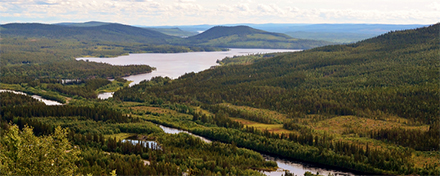Forests that have been used intensively increase the carbon stock, while forests that have not been used as intensively have a relatively unchanged carbon stock, shows a report from an international research group. Source: Timberbiz
The study reports for the first time a comparison of the development of the forest’s carbon stock over time in different parts of the boreal forest belt.
The importance of the forest for the development of the carbon stock is intensely debated.
Therefore, this study is an important contribution to the work of increasing knowledge about how the forest can contribute to the transition to a fossil-free society, says Peter Blomback, senior advisor at the Unit for Policy and Analysis at the Swedish Forest Agency.
The international research report has been published in the Swedish Forest Agency’s report series as it is part of the Swedish Forest Agency’s assignment with the implementation of the forest program.
The study was led by the Swedish University of Agricultural Sciences, SLU.
It has been authored by a total of 25 researchers from six boreal countries and from the IIASA research institute in Vienna, Austria.
All are members of IBFRA, an organization that unites forest research institutions in the boreal zone (the coniferous forest belt in the Northern Hemisphere).
It briefly shows that the carbon stock in the most intensively farmed boreal forest landscapes is increasing, while it is relatively unchanged in less intensively farmed forests.
There, the losses of coal in forest fires have instead been significant.
The northern coniferous forest belt extends through Canada, the American Alaska, Russia, Sweden, Finland and Norway.
The report thus does not support claims that unused forests make the greatest climate benefit, says Peter Hogberg, who is a professor of forestry at SLU.
An important reason for the large differences in coal uptake between cultivated and unused forests is the high growth in the managed forests, which are on average younger.
Another is the large losses of coal in the forest fires that occur much more often in the less intensively managed or unmanaged forests.
The report is the result of an assignment initiated at a ministerial meeting in Haparanda 2018 and which included six boreal countries: the United States, Canada, Norway, Sweden, Finland and Russia.
The boreal cooperation was established in 2012 and has since developed to include international organizations such as the IBFRA, the FAO and the United Nations Economic Commission for Europe (ECE).








